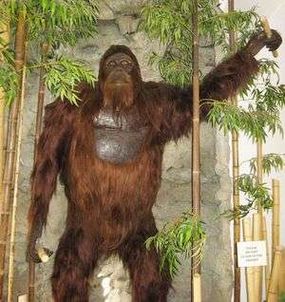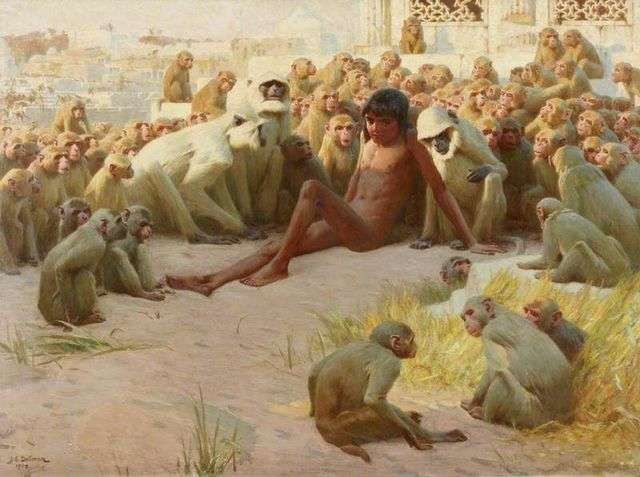Quck answer
Gigantopithecus was a genus of extinct primates that lived in Asia around 9 million years ago. They were the largest primates to ever exist, with some individuals standing up to 10 feet tall and weighing over 1,000 pounds. These giant apes were likely herbivores, feeding on tough bamboo and other vegetation. Although they are often compared to modern-day orangutans, they are not direct ancestors of the species. Despite their impressive size, very little is known about Gigantopithecus, as their fossils are rare and incomplete. However, they continue to capture the imagination of many, including those who created the character King Louie in Disney’s “The Jungle Book.”
Extinct Animals

In the 2016 live-action adaptation of “The Jungle Book,” Mowgli meets King Louie, a giant ape resembling an orangutan. However, the character design was actually inspired by Gigantopithecus, a massive primate that once lived in prehistoric India. The animators of the 1967 animated film wanted to create a new character while staying true to the Indian flora and fauna, and Gigantopithecus was a native species of India.

Gigantopithecus blacki was the largest species of this extinct primate, estimated to be over 10 feet tall and weigh more than 1200 pounds. Scientists discovered teeth and jaw bones belonging to the species in China, Vietnam, and India, as well as in traditional apothecaries that sold primate molars. While large primates are still spotted across the globe, there is no evidence of Gigantopithecus in North America.
David Mizejewski, a naturalist and wildlife expert, believes that it is unlikely that a remnant Gigantopithecus is behind modern bigfoot sightings. Much of what we know about this extinct primate could change with the discovery of additional fossils, but it seems that they were extinct long before modern times. Ancient humans in Asia may have encountered them and formed legends of giant apes that survive in human cultures today.

Although Gigantopithecus may not be the answer to sasquatch sightings, clues about its extinction could be important for preserving other species of living apes. A recent study by Friedmann Schrenk and his colleagues at the Senckenberg Research Institute in Germany examined the giant ape’s fossilized tooth enamel to determine its diet and how this may have contributed to its extinction. As the climate changed and forested areas became savannas, food became scarce and the giant apes eventually died off. “This has happened to countless species over the history of life on Earth,” says Mizejewski.
According to Mizejewski, all modern apes are endangered due to the destruction of their habitat caused by humans. This includes logging, burning, and converting it to agriculture. This human-caused habitat loss is happening much faster than natural factors, resulting in the same outcome. Interestingly, in the live-action “Jungle Book,” King Louie’s movements were portrayed using motion-capture technology and voiced by Christopher Walken, while the character’s introduction in the 1967 animated film was voiced by jazz performer Louis Prima.
FAQ
1. Who was Gigantopithecus?
Gigantopithecus was an extinct species of giant ape that lived in Asia during the Pleistocene epoch. It is believed to have gone extinct about 300,000 years ago. It was the largest primate that ever lived, with males standing up to 10 feet tall and weighing up to 1,200 pounds. Its name means “giant ape.”
2. What is the connection between Gigantopithecus and ‘The Jungle Book’?
In ‘The Jungle Book,’ the character King Louie is depicted as a Gigantopithecus. Although King Louie is a fictional character, the filmmakers drew inspiration from the real-life Gigantopithecus to create him. They wanted to portray him as the largest and most powerful primate in the jungle.
3. What do we know about the behavior of Gigantopithecus?
We don’t know much about the behavior of Gigantopithecus because we have very little fossil evidence. However, based on its teeth, we can tell that it was a herbivore and probably ate tough, fibrous plants. It likely lived in forests and spent much of its time on the ground.
4. Why did Gigantopithecus go extinct?
We’re not entirely sure why Gigantopithecus went extinct, but there are a few theories. One theory is that it couldn’t adapt to the changing climate, which led to a decline in its food sources. Another theory is that it was hunted to extinction by early humans.
5. Why is Gigantopithecus important?
Gigantopithecus is important because it was the largest primate that ever lived, and it gives us a glimpse into the diversity of primates that existed in the past. By studying its fossils, we can learn more about its anatomy, behavior, and evolution. It also shows us how much the world has changed over time and how important it is to protect the species that we have today.





Leave a Reply